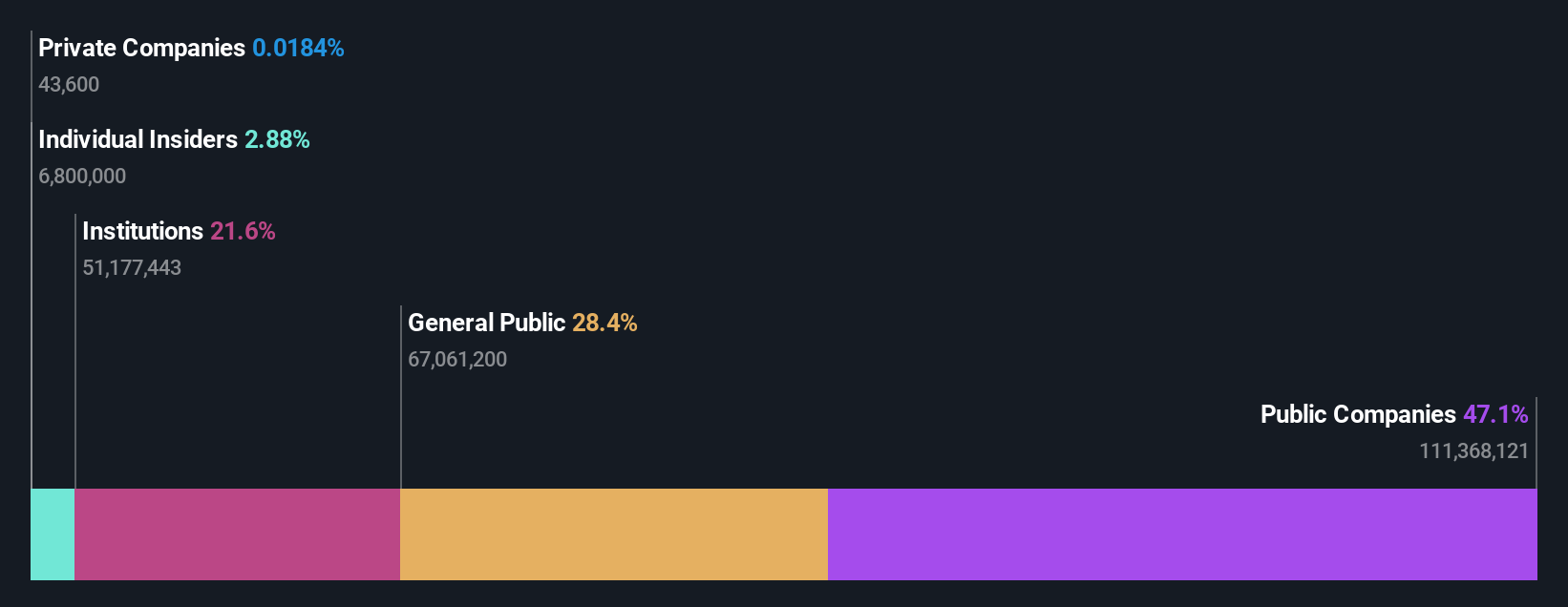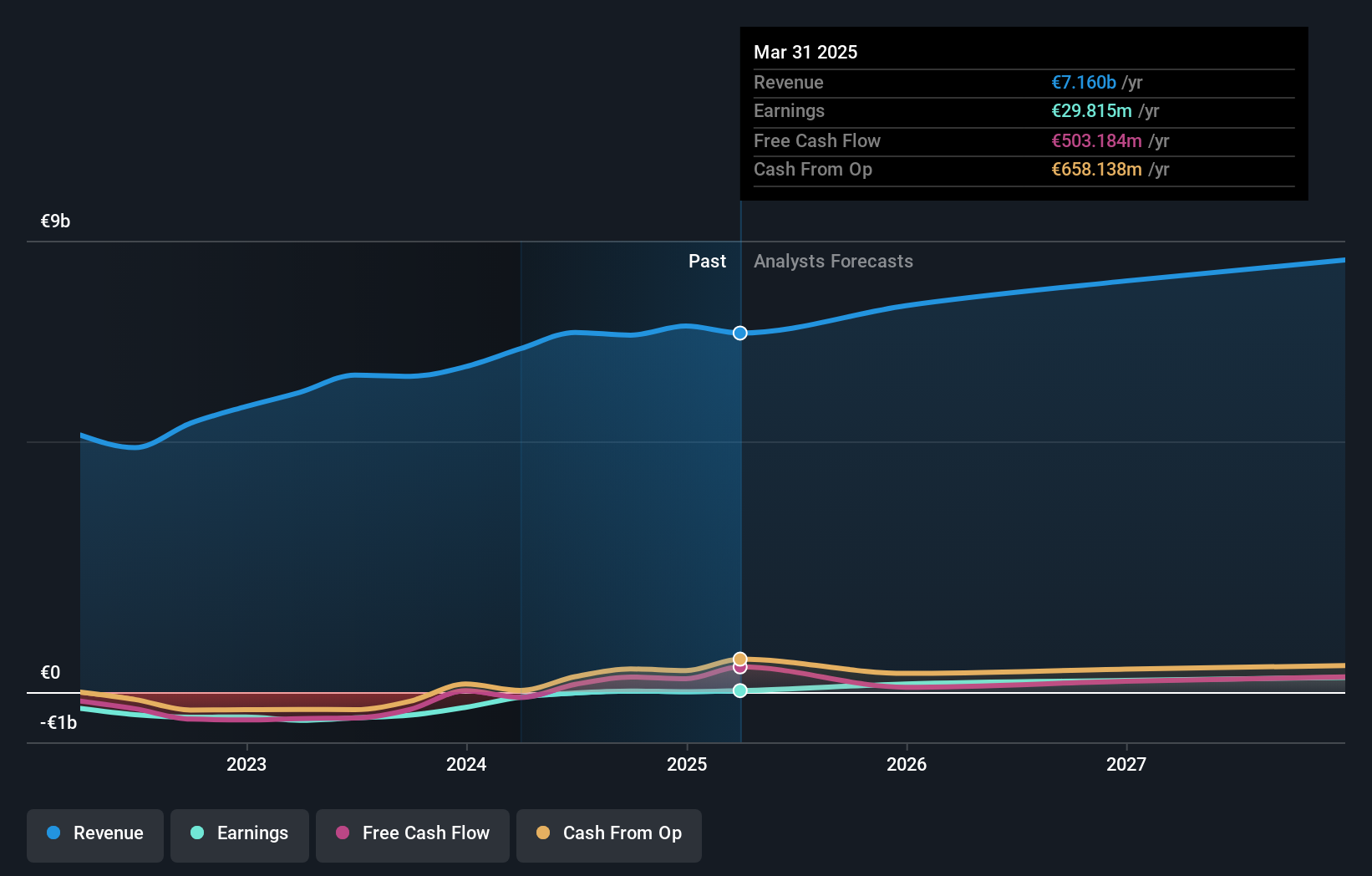Public companies among Nordex SE's (ETR:NDX1) largest stockholders and were hit after last week's 3.2% price drop
Key Insights
- The considerable ownership by public companies in Nordex indicates that they collectively have a greater say in management and business strategy
- A total of 2 investors have a majority stake in the company with 51% ownership
- 22% of Nordex is held by Institutions
Every investor in Nordex SE (ETR:NDX1) should be aware of the most powerful shareholder groups. The group holding the most number of shares in the company, around 47% to be precise, is public companies. In other words, the group stands to gain the most (or lose the most) from their investment into the company.
As market cap fell to €4.2b last week, public companies would have faced the highest losses than any other shareholder groups of the company.
In the chart below, we zoom in on the different ownership groups of Nordex.
See our latest analysis for Nordex

What Does The Institutional Ownership Tell Us About Nordex?
Institutions typically measure themselves against a benchmark when reporting to their own investors, so they often become more enthusiastic about a stock once it's included in a major index. We would expect most companies to have some institutions on the register, especially if they are growing.
Nordex already has institutions on the share registry. Indeed, they own a respectable stake in the company. This can indicate that the company has a certain degree of credibility in the investment community. However, it is best to be wary of relying on the supposed validation that comes with institutional investors. They too, get it wrong sometimes. When multiple institutions own a stock, there's always a risk that they are in a 'crowded trade'. When such a trade goes wrong, multiple parties may compete to sell stock fast. This risk is higher in a company without a history of growth. You can see Nordex's historic earnings and revenue below, but keep in mind there's always more to the story.

Hedge funds don't have many shares in Nordex. Our data shows that Acciona, S.A. is the largest shareholder with 47% of shares outstanding. With 3.8% and 2.9% of the shares outstanding respectively, JPMorgan Chase & Co, Private Banking and Investment Banking Investments and BlackRock, Inc. are the second and third largest shareholders.
A more detailed study of the shareholder registry showed us that 2 of the top shareholders have a considerable amount of ownership in the company, via their 51% stake.
While studying institutional ownership for a company can add value to your research, it is also a good practice to research analyst recommendations to get a deeper understand of a stock's expected performance. There are plenty of analysts covering the stock, so it might be worth seeing what they are forecasting, too.
Insider Ownership Of Nordex
The definition of an insider can differ slightly between different countries, but members of the board of directors always count. Management ultimately answers to the board. However, it is not uncommon for managers to be executive board members, especially if they are a founder or the CEO.
Most consider insider ownership a positive because it can indicate the board is well aligned with other shareholders. However, on some occasions too much power is concentrated within this group.
We can report that insiders do own shares in Nordex SE. The insiders have a meaningful stake worth €120m. Most would see this as a real positive. If you would like to explore the question of insider alignment, you can click here to see if insiders have been buying or selling.
General Public Ownership
With a 28% ownership, the general public, mostly comprising of individual investors, have some degree of sway over Nordex. While this group can't necessarily call the shots, it can certainly have a real influence on how the company is run.
Public Company Ownership
It appears to us that public companies own 47% of Nordex. We can't be certain but it is quite possible this is a strategic stake. The businesses may be similar, or work together.

Next Steps:
It's always worth thinking about the different groups who own shares in a company. But to understand Nordex better, we need to consider many other factors. For instance, we've identified 1 warning sign for Nordex that you should be aware of.
If you are like me, you may want to think about whether this company will grow or shrink. Luckily, you can check this free report showing analyst forecasts for its future.
NB: Figures in this article are calculated using data from the last twelve months, which refer to the 12-month period ending on the last date of the month the financial statement is dated. This may not be consistent with full year annual report figures.
Have feedback on this article? Concerned about the content? Get in touch with us directly. Alternatively, email editorial-team (at) simplywallst.com.
This article by Simply Wall St is general in nature. We provide commentary based on historical data and analyst forecasts only using an unbiased methodology and our articles are not intended to be financial advice. It does not constitute a recommendation to buy or sell any stock, and does not take account of your objectives, or your financial situation. We aim to bring you long-term focused analysis driven by fundamental data. Note that our analysis may not factor in the latest price-sensitive company announcements or qualitative material. Simply Wall St has no position in any stocks mentioned.
 Wall Street Journal
Wall Street Journal